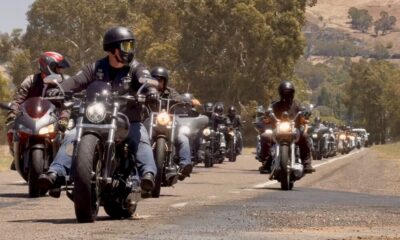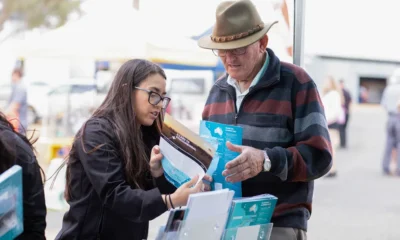Local
Kemp Street bridge set for September demolition
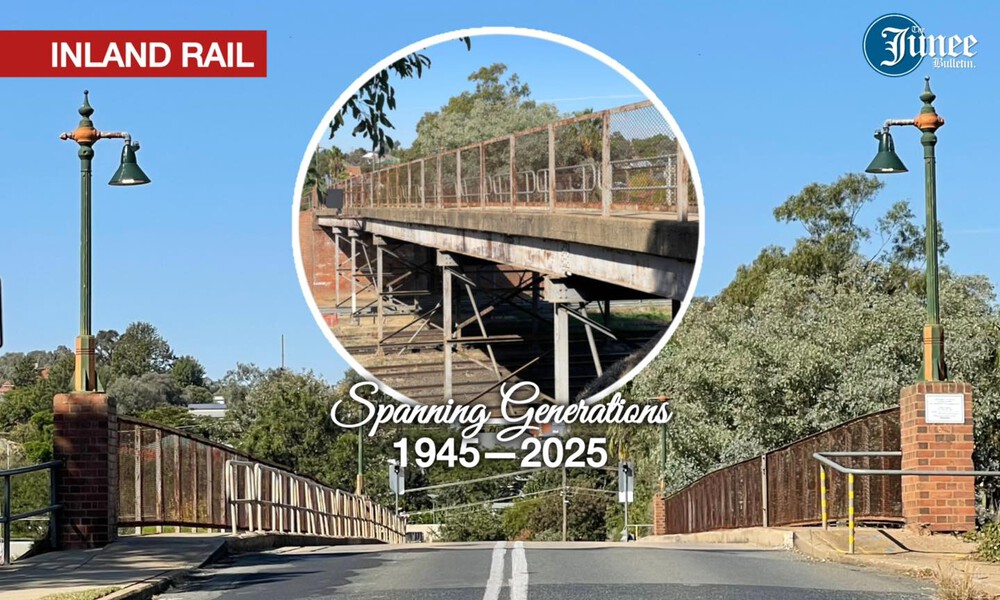
JUNEE’S Kemp Street bridge, which has connected the town’s east and west since the end of World War II, will see through one final winter before being demolished to make way for a taller, wider replacement as part of the Inland Rail project.
Inland Rail has confirmed to The Junee Bulletin that, following four years of environmental assessments and extensive community consultation, demolition of the 80-year-old bridge is scheduled for September.
A new overpass — more than two metres taller than the current structure — will be built in its place, allowing 6.5-metre-high double-stacked freight trains to pass safely beneath, while improving access for vehicles and pedestrians above.
“Current planning timelines will see the current bridge demolished during the September possession, a 60-hour period where all train services are suspended on the Melbourne–Sydney line,” a spokesperson for the project said.
Built in the mid-1940s, the Kemp Street bridge is one of just three rail crossings linking Junee’s east and west.
Its removal will close the southernmost crossing for up to 18 months while the new bridge is constructed.
Inland Rail says it is working on a traffic management plan with key stakeholders — including emergency services, Junee Shire Council, Transport for NSW, and public transport providers — to minimise disruption during the closure.
“Once the traffic management plan has been finalised, we will inform the community so that all road users are aware of the approved traffic changes ahead of time.”
◾️ PEDESTRIAN IMPACTS + BRIDGE DESIGN
Efforts are also underway to mitigate the impacts on pedestrians, particularly schoolchildren and workers who cross the bridge daily.
“We acknowledge there will also be impacts to pedestrian users during construction, and we are looking at mitigation measures to help reduce those impacts to the Junee community,” the spokesperson added.
The replacement bridge is expected to feature wider traffic lanes and an extra-wide pedestrian path — an early request made by Junee Shire Council.
Early designs released in 2021 proposed a three-metre-wide protected path on the northern side of the bridge, overlooking the Junee Yard.
However, Inland Rail says the design has since evolved, with updated visualisations expected to be released “in the coming months.”
“Designs for the bridge will be shared with the community when they have been completed,” the spokesperson said. “We are currently working on visualisations to share with the community over the coming months.”
◾️ TIMELINES + DELAYS
Initial plans anticipated the bridge would be completed in 2024, with Inland Rail trains passing through Junee by 2025.
However, delays from a lengthy assessment and consultation process have pushed the timeline back, with delivery of Inland Rail south of Parkes now not expected until at least late 2027.
The Kemp Street bridge is just one of several local structures along the existing rail corridor that will be removed, replaced or enhanced to accommodate the Inland Rail route.
The disused footbridge at Junee’s heritage-listed station — decommissioned 20 years ago — will be removed, and the dual track over the Olympic Highway underbridge will be reduced to a single track to allow for greater clearance.
Meanwhile, the NSW Government has also committed to replacing the notorious Olympic Highway level crossing at Illabo with a new overpass, as part of a $70 million level crossing removal package linked to Inland Rail.
◾️ EARLY WORKS UNDERWAY
The 185-kilometre Albury to Illabo section moved into the detailed design, early works, and construction phase last year, after receiving final planning approvals in October.
James Kennedy, delivery director for the Albury to Parkes section, said at the time the project had entered a critical stage.
“Being granted NSW Government planning approval for the Albury to Illabo section is a significant milestone as we work hard towards delivering Inland Rail south of Parkes by the end of 2027,” Mr Kennedy said.
“Following approval, the project will enter the construction stage, where we will work closely with our contractor to ensure the project’s design complies with the planning conditions of approval.”
Martinus Rail, which was awarded the design-and-construct contract in June 2023, has already begun early works around Junee, including track works, drainage upgrades, and resurfacing between Junee and Illabo.
Since mid-March, crews have also been conducting utility investigations around the Kemp Street bridge site — including potholing and using a drill rig and vacuum truck along Edgar Street between Kemp and George streets.
Inland Rail says these early works are essential to finalising the bridge’s design.
“As we move towards the start of construction, Martinus Rail team members will be visible in Junee conducting site investigations to facilitate the planning process,” a spokesperson said.
◾️ COMMUNITY ENGAGEMENT
Before major works begin, Inland Rail must still complete environmental and social management plans, secure permits, and continue consultation with stakeholders — a process involving further field studies and community engagement.
Inland Rail’s Albury to Illabo Stakeholder Engagement Team will continue providing updates to the community throughout the planning and construction process.
Residents will have an opportunity to speak with the team in person on Monday, May 5, with a pop-up session outside the Junee Newsagency from 11am to 1pm, and in Turland Street, Illabo from 2:30pm to 4:30pm.
Community members can also get in touch via email at inlandrailnsw@inlandrail.com.au or by calling 1800 732 761.
◾️ BRIDGE HISTORY: Spanning Generations
After more than half a century of debate and delayed proposals, Junee’s Kemp Street overbridge officially opened to traffic on March 8, 1945 — marking a pivotal moment in the town’s development and transport infrastructure.
An overhead railway crossing was first seriously proposed in 1911, when then–Railway Cpmmissioner J. Johnson suggested a bridge from Stewart Street to Seignior Street.
The £8000 project would have been two-thirds funded by the Railway Department.
However, despite support from Mayor W. J. Hiscock, Junee Municipal Council rejected the offer — a decision that would stall the project for more than three decades.
It wasn’t until the early 1940s that formal plans began to take shape for the bridge we know today.
On August 11, 1942, the Daily Advertiser reported on revised blueprints for a long traffic bridge spanning the trunk line.
Originally planned to curve from Pretoria Avenue toward George Street, the design was later revised to follow a straight route, narrowly avoiding the backyard of the Locomotive Hotel.
The updated alignment would rise at the base of Kemp Street, pass over Edgar Street and Railway Parade, and descend just clear of the hotel’s rear boundary.
This required the resumption of several businesses and private homes, including a bakery and butcher shop near the corner of Edgar and George Streets.
Lighting concerns were also addressed shortly before completion.
In February 1945, council minutes revealed that the Railway Department would install four lamps on the bridge, while Junee Municipal Council would handle lighting on Ducker and Kemp Streets — all powered by the town supply.
The bridge officially opened to traffic on March 8, 1945.
The first to cross was a drover on horseback — briefly reprimanded, then waved through — in a moment that became a quirky and symbolic inauguration.
The milestone followed decades of intermittent agitation by residents, and represented a crucial connection between Junee’s eastern and western halves.
Just two months later, in May 1945, the Daily Advertiser reported the bridge would already need to be raised an additional 15 inches to meet new clearance requirements.
Now, after standing for eight decades, the Kemp Street bridge is again on the cusp of transformation — this time to meet the demands of a 21st-century freight network.
◾️ LOOKING AHEAD
Once the Inland Rail connection to Brisbane is complete, the 1,600-kilometre line is expected to significantly boost freight traffic through Junee, with up to 20 trains per day by 2040 — up from the current average of 12.
Double-stacked trains could stretch as long as 1.8 kilometres, each removing the equivalent of 110 B-double trucks from regional roads.
Currently, freight trains between Albury and Illabo range from 400 to 1,600 metres in length.
-
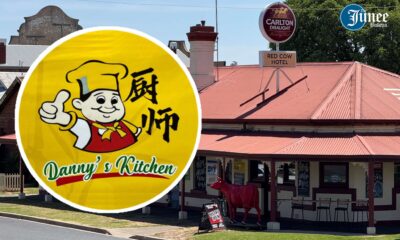
 Local3 months ago
Local3 months agoSAME MENU, NEW VENUE: Danny’s Kitchen reopens at the Red Cow
-
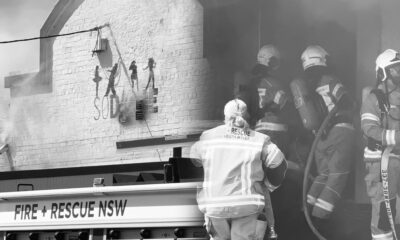
 Local3 months ago
Local3 months agoMajor fundraiser in the works for fire hit businesses
-
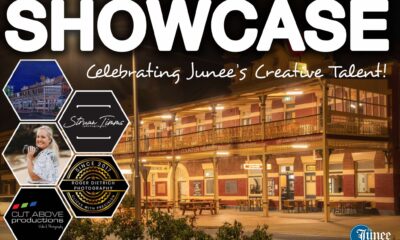
 Local3 months ago
Local3 months agoSHOWCASE: Junee Hotel to host local photography and art exhibition
-
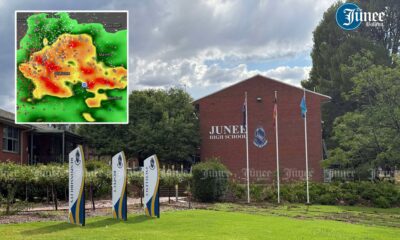
 Local3 months ago
Local3 months agoClean-up continues at flood-hit high school
-
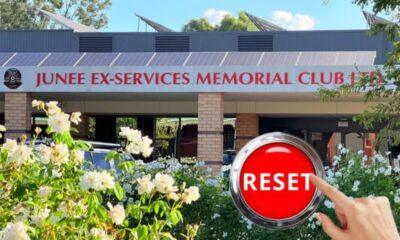
 Local1 month ago
Local1 month agoClub resets election after ‘injustice’
-

 Local6 months ago
Local6 months agoJunee chocolate factory’s new event space shines at star wedding
-
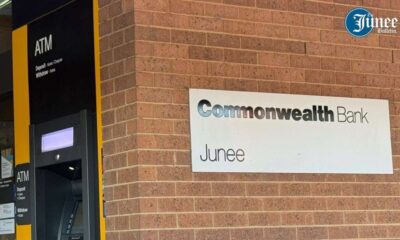
 Local3 months ago
Local3 months agoNew deal to keep Junee’s last bank open until 2027
-

 Local6 months ago
Local6 months agoJunee photographer turning heads with artistic nude photography


